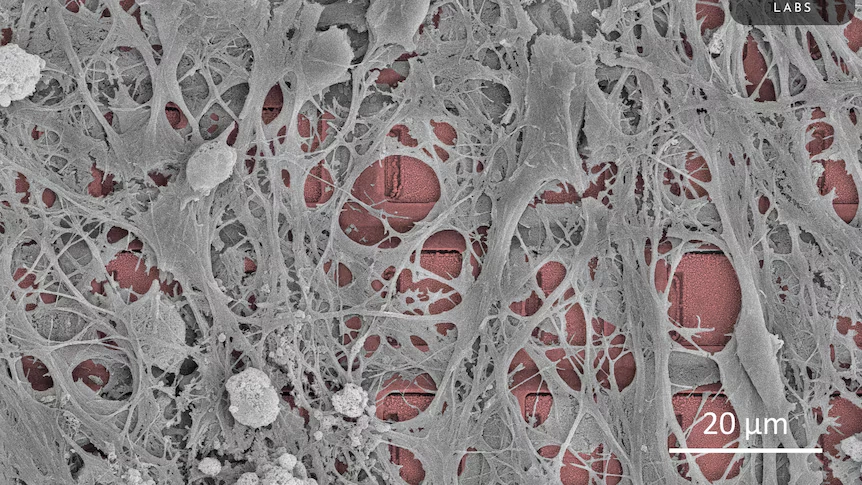"Embrace The Next Evolution"
Analog vs Digital vs Quantum Computing

For decades, the word "computer" conjured images of blinking lights, whirring fans, and the precise logic of binary code. This is the realm of the digital computer, the workhorse of our modern world, powering everything from smartphones to supercomputers. But the computational landscape is evolving. Two other paradigms, analog computing and the burgeoning field of quantum computing, offer fundamentally different approaches to problem-solving, each with its own strengths and potential. Let's step into this computational arena and explore the unique characteristics of these three contenders.
The Reigning Champion: Digital Computing
Digital computers operate on the principle of discrete values, most commonly represented by bits – 0s and 1s. All information, from text and images to complex calculations, is broken down into these binary digits. This discrete nature provides several key advantages:
- Accuracy and Precision: By manipulating exact binary values, digital computers can perform calculations with high accuracy and repeatability. Errors are minimized through well-defined logical operations.
- Versatility and Programmability: Digital computers are incredibly versatile. Their behavior is determined by software, allowing them to perform a vast array of tasks, from word processing to running complex simulations.
- Scalability and Miniaturization: Advances in microelectronics have allowed for the creation of increasingly powerful and smaller digital computers, leading to the ubiquitous technology we see today.
However, digital computing also faces limitations. For certain types of problems, particularly those involving vast amounts of data or complex simulations, the discrete nature of their operation can lead to computational bottlenecks and long processing times.
A Blast from the Past, Poised for a Comeback: Analog Computing
In contrast to the discrete world of digital, analog computers work with continuous physical quantities, such as voltage, current, or mechanical motion, to represent and manipulate data. Think of a slide rule or an old-fashioned speedometer – these are simple analog devices.
Key characteristics of analog computing include:
- Direct Representation: Analog computers directly represent variables with physical quantities, often leading to a more intuitive mapping of the problem onto the hardware.
- Speed and Efficiency for Specific Tasks: For certain types of problems, particularly those involving differential equations or real-time control systems, analog computers can offer significant speed advantages over their digital counterparts.
- Lower Power Consumption (Potentially): In some applications, analog circuits can be more power-efficient than digital circuits performing the same task.
However, analog computing also has significant drawbacks that led to its decline in mainstream computing:
- Limited Precision and Accuracy: Physical systems are inherently susceptible to noise and drift, limiting the precision and accuracy of analog computations.
- Lack of Versatility and Programmability: Analog computers are typically designed for specific tasks, making them less flexible than their digital counterparts. Reprogramming often involves rewiring the hardware.
- Scalability Challenges: Building complex and large-scale analog computers is significantly more challenging than scaling digital systems.
Despite these limitations, analog computing is experiencing a resurgence in niche applications, particularly in areas like artificial intelligence (neuromorphic computing), signal processing, and specialized simulations where speed and energy efficiency are critical.
The Revolutionary Frontier: Quantum Computing
Quantum computing represents a radical departure from both digital and analog approaches. Instead of relying on classical bits that can be either 0 or 1, quantum computers leverage the principles of quantum mechanics to process information using qubits.
Qubits can exist in a superposition of states, meaning they can be both 0 and 1 simultaneously. They can also exhibit entanglement, where the state of one qubit is linked to the state of another, regardless of the distance between them. These quantum phenomena allow quantum computers to perform certain types of calculations in ways that are fundamentally impossible for even the most powerful classical supercomputers.
Key characteristics of quantum computing include:
- Exponentially Increased Computational Power for Specific Problems: For certain classes of problems, such as drug discovery, materials science, cryptography, and optimization, quantum computers have the potential to offer exponential speedups compared to classical algorithms.
- Novel Algorithms and Approaches: Quantum computing requires the development of entirely new algorithms that can exploit quantum phenomena.
- Potential to Solve Previously Intractable Problems: Quantum computers hold the promise of tackling problems currently beyond the reach of classical computation.
However, quantum computing is still in its nascent stages and faces significant challenges:
- Qubit Instability and Decoherence: Qubits are extremely sensitive to environmental noise, leading to errors in computation. Maintaining the delicate quantum states (coherence) is a major technological hurdle.
- Scalability and Error Correction: Building large-scale, fault-tolerant quantum computers is a complex engineering challenge.
- Algorithm Development: The development of quantum algorithms is a specialized and evolving field.
- Cost and Accessibility: Current quantum computers are expensive and not widely accessible.
The Future of Computation: A Hybrid Landscape?
It's unlikely that one type of computer will completely replace the others. Instead, the future of computation will likely involve a hybrid landscape where each paradigm plays a crucial role:
- Digital computers will remain the dominant force for general-purpose computing, data processing, and the vast majority of everyday tasks.
- Analog computers will find specialized applications where their speed and efficiency for specific tasks offer significant advantages.
- Quantum computers will tackle computationally intensive problems that are intractable for classical computers, revolutionizing fields like medicine, materials science, and artificial intelligence.
Imagine a future where complex drug simulations are run on quantum computers, the data analysis for clinical trials is handled by powerful digital systems, and real-time control of medical devices relies on the speed and efficiency of analog circuits.
The computational arena is dynamic and exciting. While digital computing has defined our technological era, the resurgence of analog and the dawn of quantum computing promise to unlock new possibilities and reshape the future of how we solve the world's most challenging problems. The race is on, and the ultimate winners will be the advancements in science and technology that these diverse computational approaches will enable.









